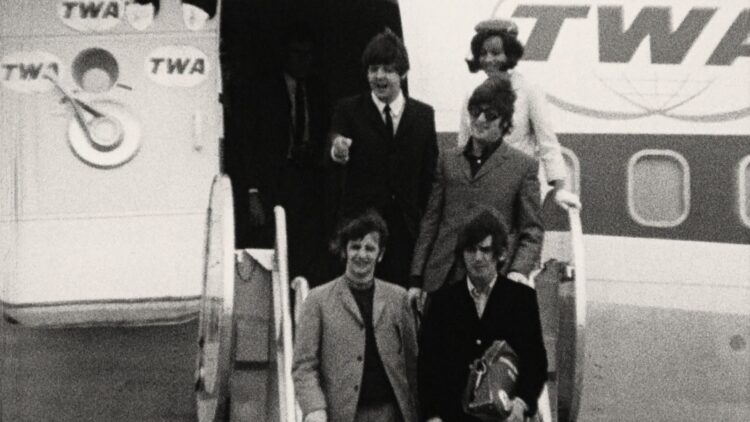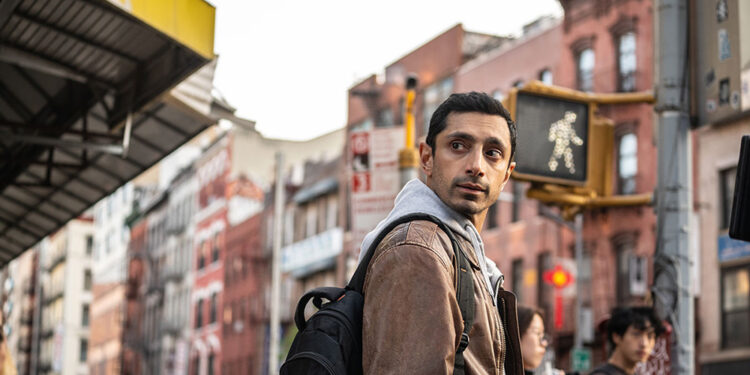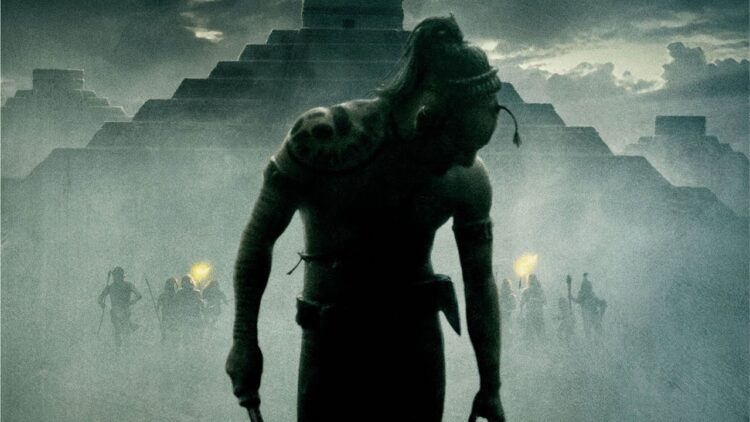

Following The Film Stage’s collective top 50 films of 2024, as part of our year-end coverage, our contributors are sharing their personal top 10 lists.
By way of introduction, I think I said most of the important things last year, so I’ll keep it short this time around. Maybe.
2024 was probably a beautiful, exciting, formative year for some people: a year of first kisses, first jobs, life-changing continental vacations, that sort of thing. I wouldn’t know, because I spent much of it scrolling the news, and people’s reactions to the news, and sinking into a deep well of despair. If you haven’t been living the dream of health, wealth and family (and even if you have), you’ve probably noticed it too. The despair in the air––not to mention the fire, with light hints of brimstone. I don’t feel like I know my countrymen anymore, but I can feel their hunger. We’re hungering for an apocalypse, for collective salvation on the tip of a bullet––or a warhead. We want this to happen; we want a quick cure, to resolve a corrosive internal contradiction with the annihilation of an external foe. We just can’t all agree on who is most deserving. We look at unresolved contradictions breaking out into mass death overseas, and when we’re done spectating the bloodsport, we cheer: this is the perfect opportunity to prove a point to our least favorite neighbor, the one we hold responsible for it all. Thank goodness those lost foreign lives served a practical purpose. We take notes and learn.
I didn’t consciously pick them this way, but many of the new-to-me films that stuck with me most last year represent efforts to adjust to the new reality––the “vibe shift.” Whether looking inward to personal salvation in a damned world, or embracing a demonic beauty in the forces of reaction now animating our politics, or turning one’s head to the side and imagining perpendicular, humble scaffoldings on which a better world could be built outside the existing structures and worn-out methods. In some cases, just embracing the pleasure of our base impulses in a way only art can ethically guide us through. I’ll let my descriptions speak for themselves, and hope my delirious rambling is entertaining or useful to someone out there. If it is, please let me know––what I want most of all, like so many of us, is to communicate in ways you just can’t do on “social” media.
I’d again like to again thank Jordan and Nick for platforming me, as well as Ed Gonzalez, Sal Romano, and the whole Indie Film Site Network umbrella for letting me watch free movies and put my ramblings about them out into the world. Without you guys I’d just be another weirdo typing into the void.
10. Speedy (Ted Wilde, 1928)
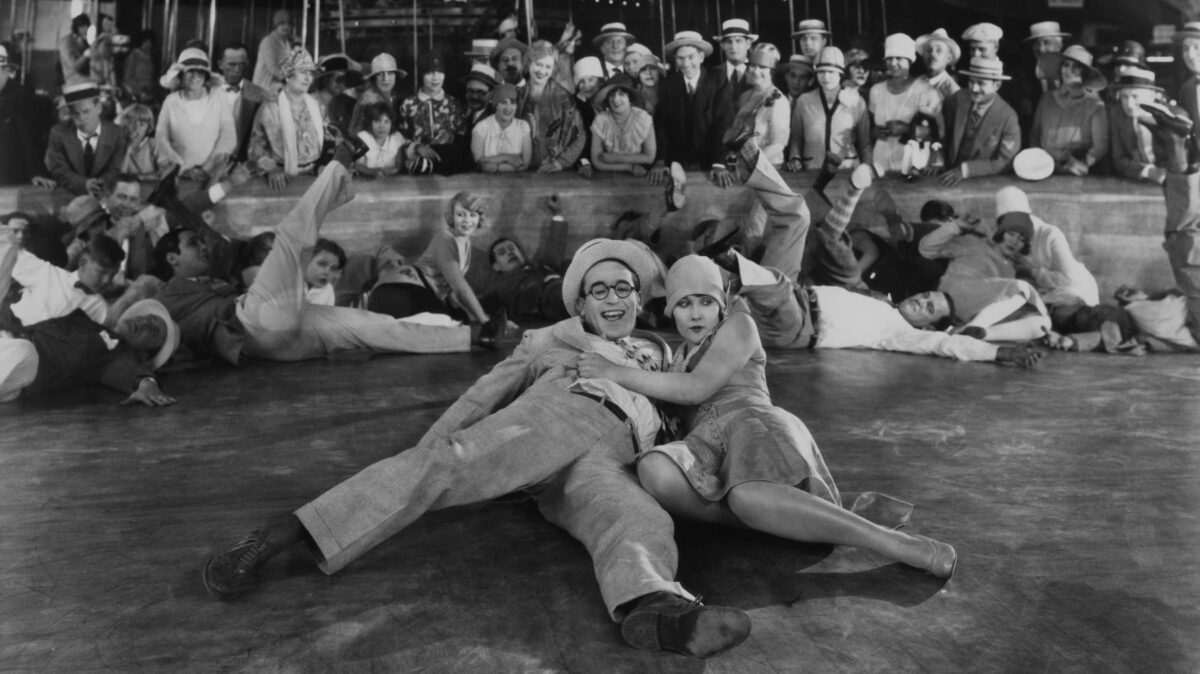
One of the great urban mayhem films I’ve seen celebrates whiplash of the most exciting kind. In its nonstop array of budget-busting setpieces Harold Lloyd leaps between vehicles, jobs, nemeses and Babe Ruth encounters with the manic drive of a video game protagonist—think Mario in roaring-20s Manhattan, or friendlier versions of GTA or Yakuza’s odd-job-loving chaos agents. True to Lloyd’s work, though, the chaos is threaded around a sly moral center: though he’s driven by the simplest of desires (enjoying his hobbies, paying his rent, spending time with his good dog and his best girl) Lloyd’s shlemiel tends to become an accidental anarchist hero, his antics making fools of state and capital while, as in Speedy’s climactic neighborhood war on a predatory streetcar tycoon, uniting working-class communities to fight for their interests. (All the more accidental, perhaps, given Lloyd’s own conservative politics later in life.) Throughout it all Lloyd’s leaping, stretching, nebbishly grinning figure cuts across dense frames evoking great vertical space—whether skyscrapers or fence posts, lines behind Harold Lloyd often point upwards—in a manner more reminiscent of the spatially liberated newspaper comic strips of the time, Krazy Kat et al, than the more theatrical vaudeville aesthetics of Chaplin and Keaton. Granted I’m often late to the party, but I’m still struggling to understand why Lloyd is so canonically relegated to the distant third place of the great silent-era comedy stars. For vibrancy, poignancy and laugh-out-loud humor of his slapstick (wait until you see what he does with a crab) he’ll always be my #1.
9. Only Yesterday (Isao Takahata, 1991)
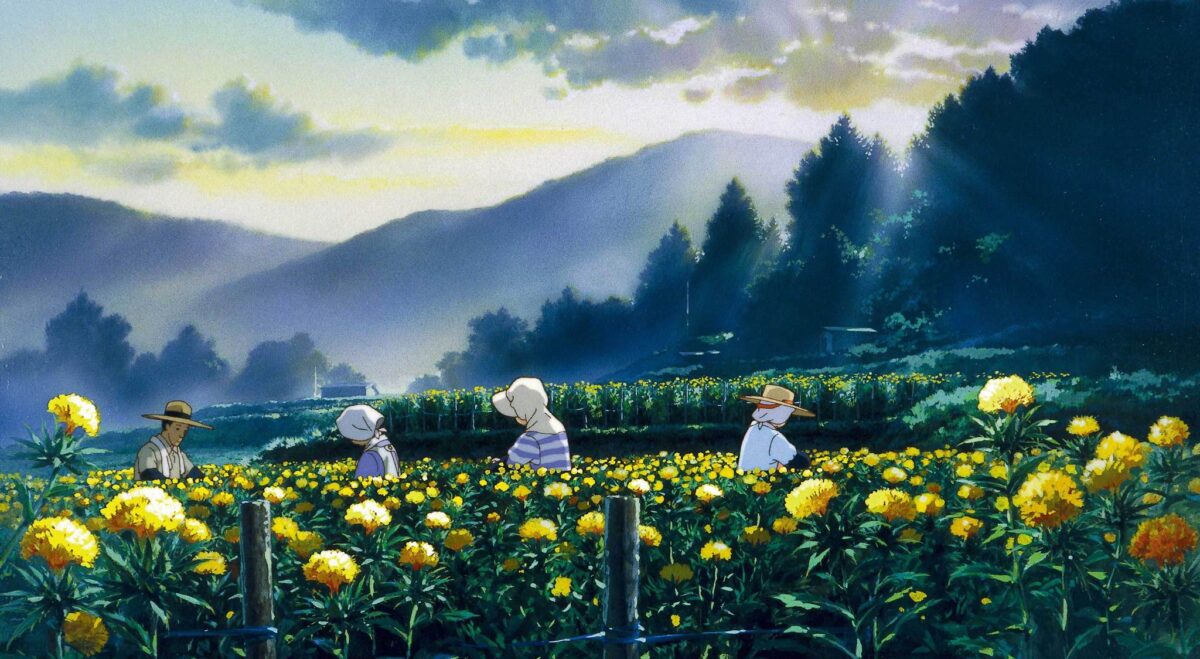
No film by the late Studio Ghibli cofounder Isao Takahata better embodies the animation auteur’s defiance of mass market sensibilities than Only Yesterday, mythologized by Western anime enthusiasts for decades as Ghibli’s “hidden” film due to its lack of an official localization. (It received its first North American commercial release in 2016, on the twenty-fifth anniversary of its release in Japan.) The money people’s aversion isn’t hard to understand: Only Yesterday, adapted from a girls’ manga, is intensely grounded in the specifics of Japanese baby boomers’ cultural memory, and the presence of cute cartoon children belies a film very much intended for adults. This of course, combined with Takahata’s delicate observation of human psychology, is what sets it apart.
The film is a sedate, realistic drama with no genre elements whatsoever, instead using its animated medium to illustrate with affective tones and colorful imagine spots the heightened emotion and fragility of memory as its 80s heroine reconstructs her 60s childhood in an episodic narrative across parallel timelines. Its driving conflict is the protagonist’s indecision between rural and urban living, and her search for a connective tissue between her child and adult selves as she vacations in the countryside. It’s one of the most unapologetically literary and abstract throughlines of any animated film, even as it engages in familiar Ghibli thematics of family, community, femininity, ambition, innocence, environmentalism, capitalism and modernity, and addresses topics like puberty and learning disabilities with a disarming frankness and uncannily exact details rarely seen in commercial cinema. (Its extended episode dealing with menstruation, allegedly, is the biggest reason longtime North American Ghibli rights-holders Walt Disney Studios refused to touch it.)
In addition to having one of the most believably human adult female protagonists in anime, it’s also one of the more poignant and sympathetic films about a late-20s/early-30s adult reconsidering their trajectory in life, the reexamination of formative memories that often accompanies such shifts, and the redemptive power to relive and recontextualize those memories offered by meaningful connections in adulthood. That is to say, it’s a film about nostalgia that wisely understands the fluidity of the past, its need for reunification with the present rather than either its total dispensation or enshrinement as unattainable Eden, in order to move forward with confidence and fulfillment. Some might say that message is more generationally valuable now than it was when the film was new.
8. Nosferatu in Venice (Augusto Caminito, 1988)
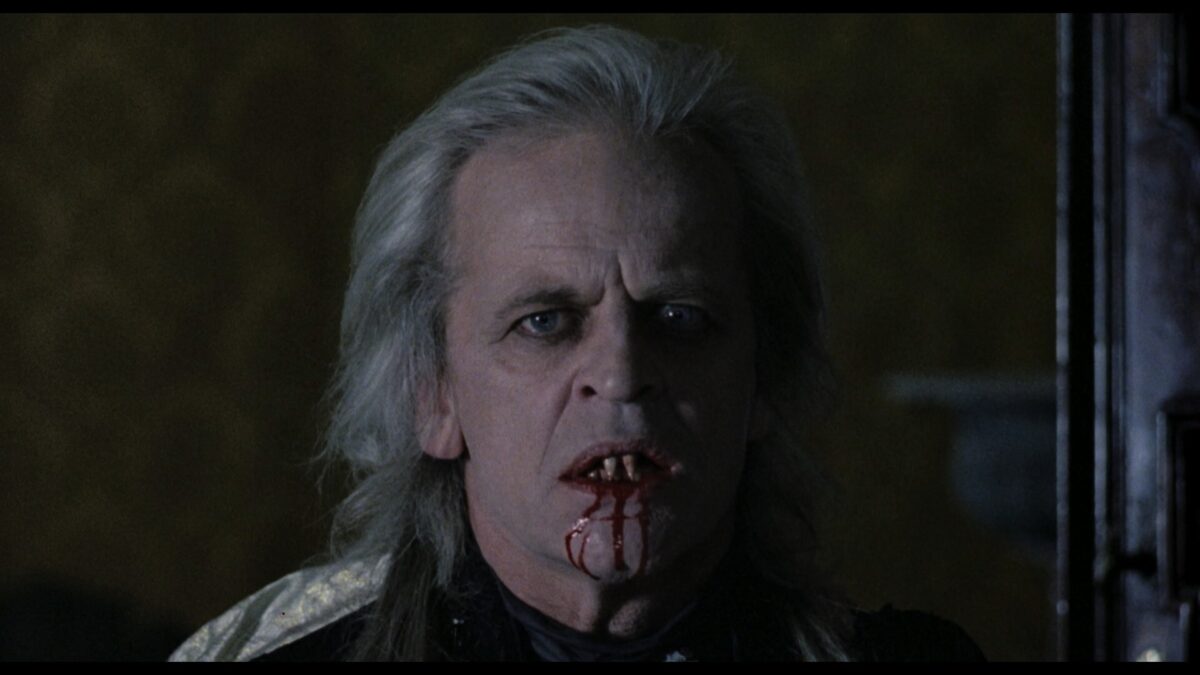
Forget everything you know about Nosferatu, most especially Robert Eggers’ bloodless reboot currently in theaters: Augusto Caminito’s ethically dubious, psychoactively irresistible B-movie is the most fun I’ve ever had with the bloodsucker of Deutschland. Klaus Kinski returns, on the visible brink of predatory insanity, to terrorize twentieth-century Italy in an unauthorized sequel to Werner Herzog’s 1979 Nosferatu, no longer looking like a human corpse with bat DNA but a disheveled nobleman with a regal mane of hair who longs for the sleep of death almost as much as the flesh of maidens. He is summoned by a cabal of repressed Catholic aristocrats and opposed by Christopher Plummer, an academic vampirologist who delivers stern lectures and debates with clergymen about the problem of evil and the struggle to be taken seriously as a secular demon hunter. The film is widely considered a laughingstock for its choppy editing and questionable production values, but see it with your heart (and perhaps some choice drugs) and, for my money, it captures the real thematic essence of vampire mythology better than most: Antonio Nardi’s photography is a symphony of gothic Venetian architecture, lit in aggressive neon colors and scored to heavy synths by Luigi Ceccarelli in collaboration with Vangelis, that registers both an awe for these quintessentially European structures and horror at the legacy of human suffering and aristocratic depravity tied up in them. Turning Nosferatu into a sweaty old guy sprinting after women in the streets both comically demystifies him and makes his carnal perversion and budget-friendly, reality-warping satanic superpowers (jump-cut teleportation, et al) all the more unpredictable and intimidating – and his God-hating despair all the more tragic an embodiment of evil. The vampire and his victims alike are torn between needs of the spirit and the flesh; neither enlightenment in academia or the church, nor submission to the catharsis of sex and bloodshed prove adequate for any of them to settle the inner void of longing from whence Nosferatu springs. Beyond science, faith and reason––let go of your reason!!––only a virgin’s pure love has a fraction of a chance. Sounds like Dracula to me.
7. Perfect Days (Wim Wenders, 2023)
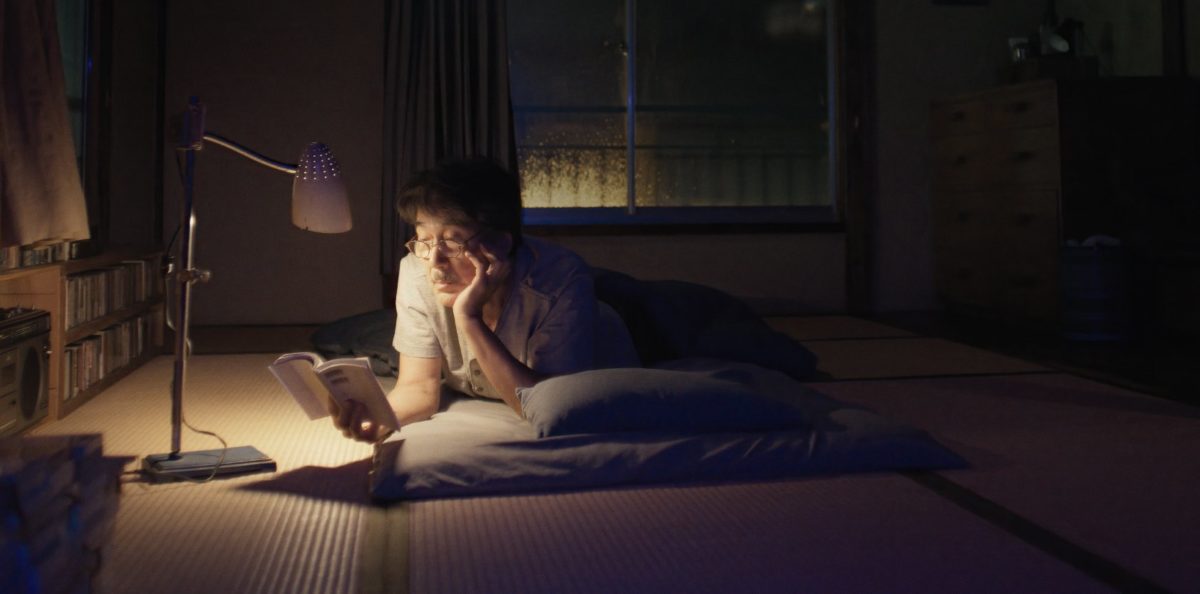
Consensus among the many admirers of Wim Wenders’ latest seems to be that his tale of a Tokyo toilet cleaner is a heartwarming ode to mindfulness and the dignity of labor, while a minority of skeptics see Koji Yakusho’s superhumanly wise and gentle protagonist as a cuddly orientalist mascot in an aesthetically mollifying celebration of urban alienation and thankless non-union working conditions. I think they’re both right, and both wrong. I saw a film more abstract and bittersweet than some of my peers seemed to: Wenders’ formal emphasis on the regimentation of space and time as defense mechanisms of the late capitalist subject put me in mind of Chantal Akerman; his spiritual inquest into analog fetishism and hermetic semi-voluntary isolation as means of carving out personal meaning in a neoliberal metropolis surging forward into the digital struck me as vaguely apocalyptic, the inevitable spiral of technological “progress” and its unstated possible collapse ever threatening to squeeze the life out of Yakusho and the neatly arranged 4:3 frames he inhabits. Far from an uncomplicated endorsement of its protagonist’s lifestyle or straightforward illustration of its title, Perfect Days read to me as a work of cinematic quietism, about the quest for transcendence within stillness, the cloister/prison of menial labor and routine, surrounded by a rapidly complexifying world which may or may not be doomed but is certainly beyond any individual’s power to overturn. Far from a bourgeois filmmaker’s fantasy, Yakusho’s temperament and bearing in the film reminded me of people I’ve known personally working similarly menial jobs––the stoicism, the rigid codes, the meditative myopia, the skepticism of (post)modernity, all weapons for taking back individual meaning and dignity from a world set to crush it. Whether he’s found a better way or is merely averting his eyes from the world––and sacrificing its messy, violent joys in the process––is an open question posed to the viewer.
6. The Women (George Cukor, 1939)
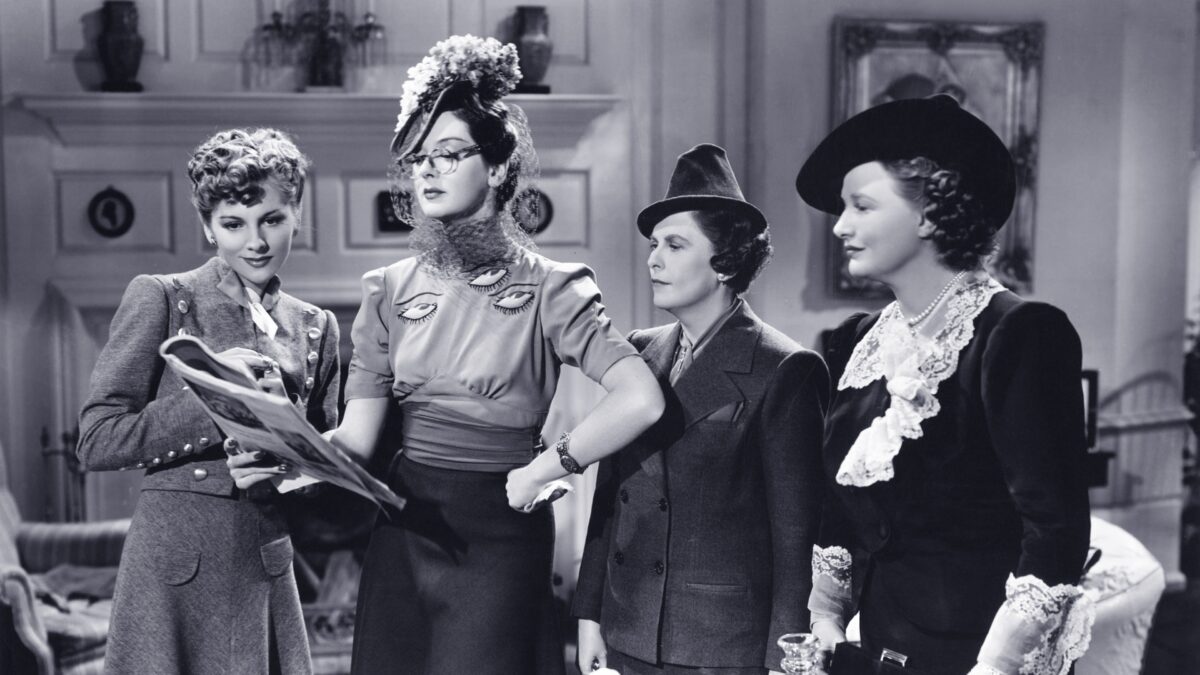
In pretty much the last two streams that I ever expected to cross on the screen, George Cukor’s cinematic ancestor to Sex and the City begins with a laugh-out-loud riff on Sergei Eisenstein’s Strike, an intro reel for its all-female cast comparing each actress by fade transition to an animal supposedly embodying her physiognomy and archetypal qualities. The animals, by the way, are also female. The gimmick of Cukor’s catty high society dramady, adapted by female screenwriters from a female playwright (with uncredited draft work by one F. Scott Fitzgerald), turns out to be more than a gimmick: by removing anyone and anything with an XY chromosome from the film’s hermetic modernist world, Cukor constructs a heightened parallel society of women, with aesthetics, rules and morals all its own. By virtue of men’s absence – they are spoken of frequently, but never seen or heard – the film explores the fraught balance of power between the sexes in the halls of privilege, the unique bonds and rivalries formed amongst its ensemble of heroines in the pursuit of status, love and domestic security. When the peppy, innocent Norma Shearer’s seemingly happy marriage is imperiled by scheming seductress Joan Crawford, she spirals into a crisis wherein she must learn that upper-class womanhood is a game of thrones played out in public appearances, private rooms and the ecosystem of gossip that connects them. The film is, as the intro suggests, bitingly funny, partly for its biting verbiage (“There’s a name for you ladies, but it isn’t used in high society–outside of a kennel!”) and partly for its understanding that femininity is a calculated performance, an act of mythological self-inflation that turns hilarious when punctured by a penetrating remark or unplanned complication. It’s high camp in the best of ways, a window into the social fabric of its time that’s still bristling with wit generations later.
5. Challengers (Luca Guadagnino, 2024)

It’s true: an actual 2024 release infiltrated my list. (And not just one!) The Luca Guadagnino/Justin Kuritzkes director-screenwriter combo (with critical contributions from Trent Reznor, Atticus Ross, and Sayombhu Mukdeeprom) were the talent revelation of the year for me. Of their “one for them/one for me” double feature bringing unapologetic eroticism back to the multiplex––the poppy, high-energy Challengers and the brooding, introspective Queer––I liked the flawed William Burroughs adaptation Queer better than many, but it’s the zippy bisexual love-triangle tennis drama that feels freer to be itself and own its status as a movie’s movie. I’d always written off Guadagnino as a shallow stylist––and maybe he is!––but his exceptional interest in evoking sensuality and states of the body is terrifically married to a yarn about young athletes who tone and squeeze their bodies for perfection, and the competitive carnal desires that animate those bodies in turn. (Watching the film made me remember accounts I’ve read of Olympic villages, notorious among maintenance staff as sites of nonstop orgies for the duration of the games.) I’ve never seen the human body fetishized on a screen before in precisely the way Guadagnino does it here, practically smearing the camera in the sweat of his hot young stars as he worships them like Greek gods, hungrily exploring every angle, using leitmotifs not only of Reznor and Ross’ visceral score but of framing and editing tics to convey the characters’ distinct personalities as well as internal states of the body: adrenalized tension and sexual arousal, competing but also temptingly complementary. Kuritzkes’ script, like Samy Burch’s for May December last year, announces him as a generational talent able to fully indulge the trashy pleasures of melodrama with structural intelligence and canny psychological insight into the ways horny, hungry people competing for turf perceive themselves and the objects of their desire and strategize accordingly. Acrobatic and coursing with vitality just as much as its erotically entangled antiheroes; the most raw fun I had in a theater all year.
4. Anora (Sean Baker, 2024)
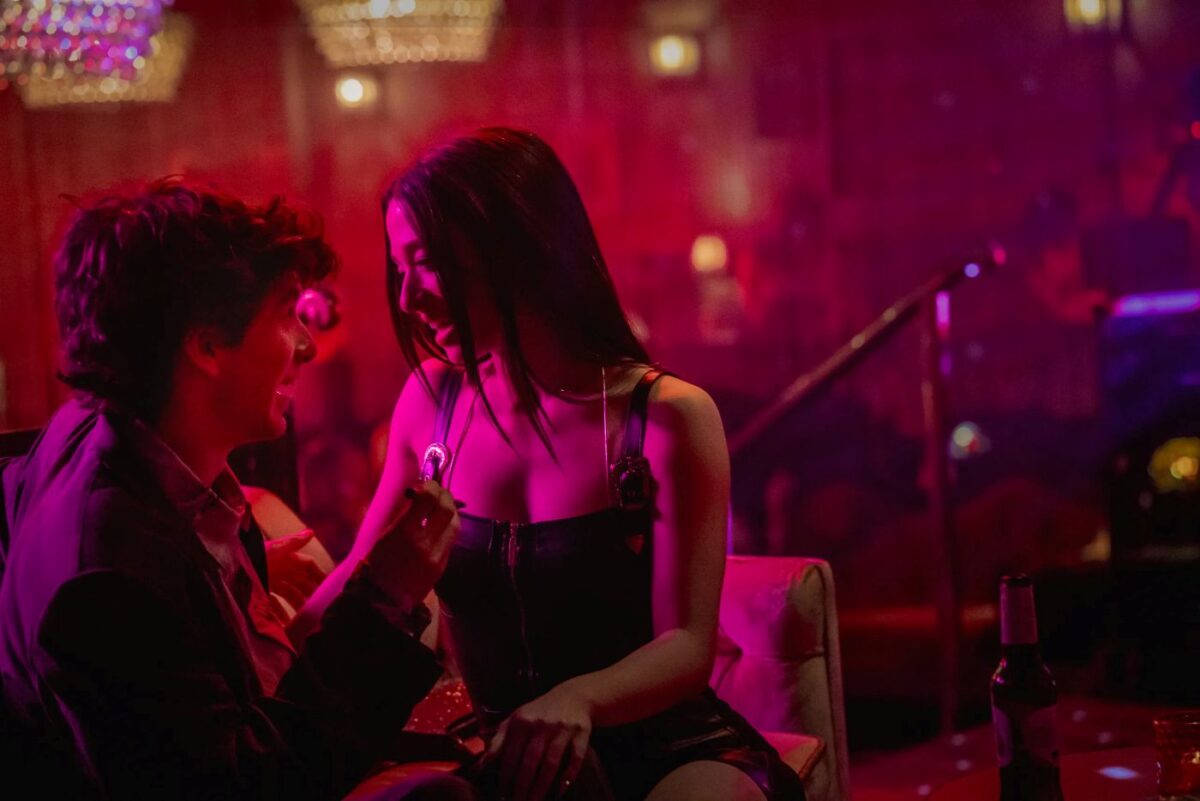
Another recent release defiling my list––and the last one, I promise. Sean Baker’s coyness of authorial voice here, in a Safdie-inspired impressionist crime film weaving fluidly between anticomedy and anti-thriller, frustrated some of my peers as much as it delighted others. To my eyes, Anora is a film about convincing yourself of something you know is bullshit. Mikey Madison’s firebrand stripper protagonist is, if not especially lovable or smart (nor should she need to be to elicit empathy, of which Baker has loads) at least savvy and cynical enough to know that acrobatically infantile billionaire-heir Mark Eydelshteyn’s offer of marriage and riches is pure fairytale; she is told as much, repeatedly, and Eydelshteyn’s immaculately noodly performance gives us little to have faith in. But through the “magic of movies”––a delirium of sensation, colors, cuts, sex, music, and scenarios echoing the romantic upwardly-mobile mythology of Hollywood’s screwball comedies of yesteryear––Baker tries, like a prostitute professing love to a customer, to seduce us into disbelieving what’s right in front of our eyes. Words are deceptive in Anora, while sights and sounds obliquely suggest what’s lurking beneath the surface: when Madison’s Anora (“Ani” – she hates her ethnic-sounding name) begins her paid weeklong liaison with Eydelshteyn’s Vanya, Take That’s “Greatest Day” drops on the soundtrack, just like in the opening strip club scene that sees her fully immersed in her role as a performer of fantasies. Yet by the end of the first act’s sugar rush, we begin to wonder if the more sensitive dynamic developing between them––Ani assumes a maternal role, coaching the sheltered princeling in the finer points of socializing and lovemaking––could be different from what we first imagined. After the film swerves violently into a panic-stricken criminal goose chase, rendered in exhaustingly long and volatile takes in the company of Russian oligarchs and Armenian hired muscle, when Ani tearfully declares her loyalty to a disappeared Vanya, we wonder if she could really believe what she’s saying––and a part of us, trained by the movies and America’s industry of fairytales, is tempted to compartmentalize away the absurdity of the situation along with her. Catching this film during a backpacking trip through the American Southwest in November, I couldn’t help but feel it identifies something profound in the psychological mechanisms and causes of Americans’ willingness to trust in juvenile oligarchs making drastic promises––we’re a country of people immersed in the ethos of prostitution, of miracles, lottery games, Cinderella stories, self-made masters, reveries of pleasure and fulfillment for the right price. No matter what so-called reality says––all the moreso when the reality is stark––why would we ever want to turn off the movie?
3. The Phantom of Liberty (Luis Buñuel, 1974)
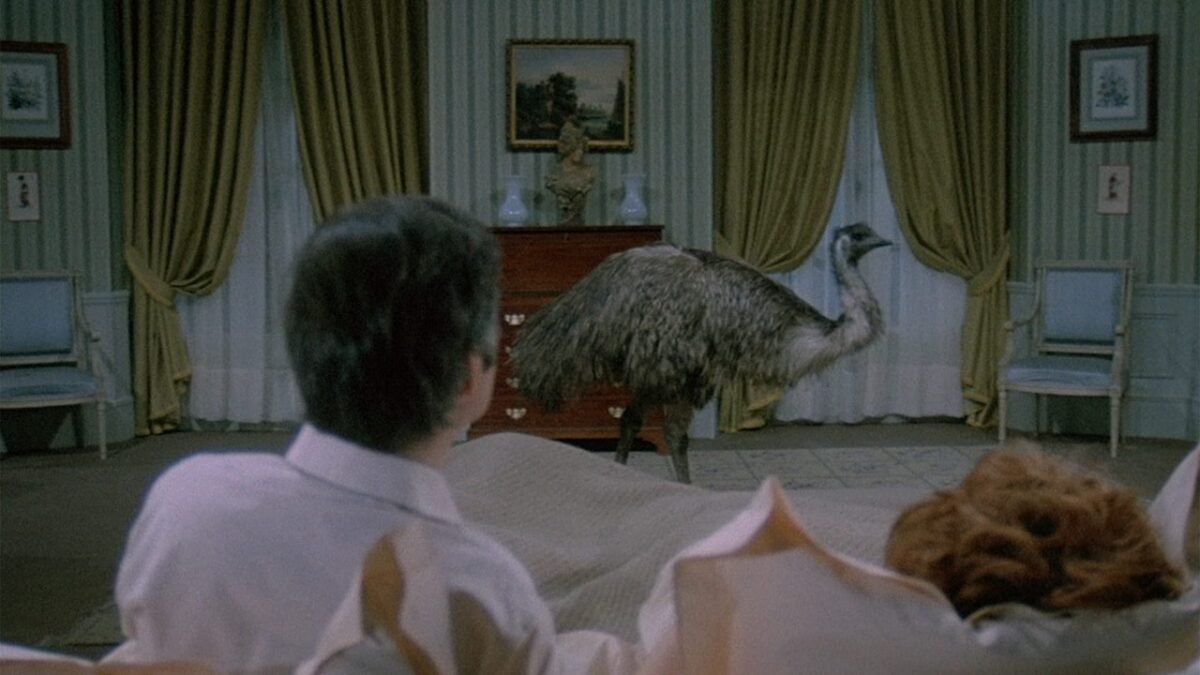
This is the first Buñuel film that’s really clicked with me––and it clicked hard. The Discreet Charm of the Bourgeoisie may be the surrealist icon’s more famous feature film, but it always played to me a bit too close to an elongated Monty Python’s Flying Circus episode without the laughs. Phantom of Liberty also plays like a Monty Python episode––effectively a series of absurdist sketches woven together by a loose thread of recurring characters and motifs––but it’s far angrier, more aggressive about disorienting and discomforting its audience, expanding its high-society farce into realms of the insistently dark and taboo. Many scenes play out as nearly straightforward drama, plausibly depicting or insinuating subjects sure to upset––pedophilia, necrophilia, incest, blasphemy, war crimes, violent revolution––only to upend them, often hilariously, with Pythonesque bait-and-switch absurdities that completely reorient the audience’s reading of the characters and situation. (Giving specific examples would spoil the twisted fun of the movie––you really have to see it for yourself.) It’s the cinematic equivalent of an MC Escher exhibition, a labyrinth of perspective tricks carefully designed to highlight the fragility of the audience’s structural understanding of time and narrative, not to mention social order and morality, by showing how easily that understanding can be manipulated on the screen and inverted into nonsense. It’s stealthy speculative fiction, as well: most sketches follow Phillip K. Dick’s worldbuilding theory of reproducing some facet of our own world faithfully with just one fundamental rule altered, and letting chaos spiral from there. The film begins and ends with populist throngs screaming “Death to liberty!” and “Long live chains!” in advance of bloody history repeating itself, a provocation that feels eerier now than it’s been in generations. As our own world’s violent upheavals and political alignments spiral deeper and deeper into the absurd––into possibilities that educated and polite society once regarded as hyperbolic and nonsensical fantasy––Bunuel’s challenge to everything we think we know and value still bites.
2. Apocalypto (Mel Gibson, 2006)
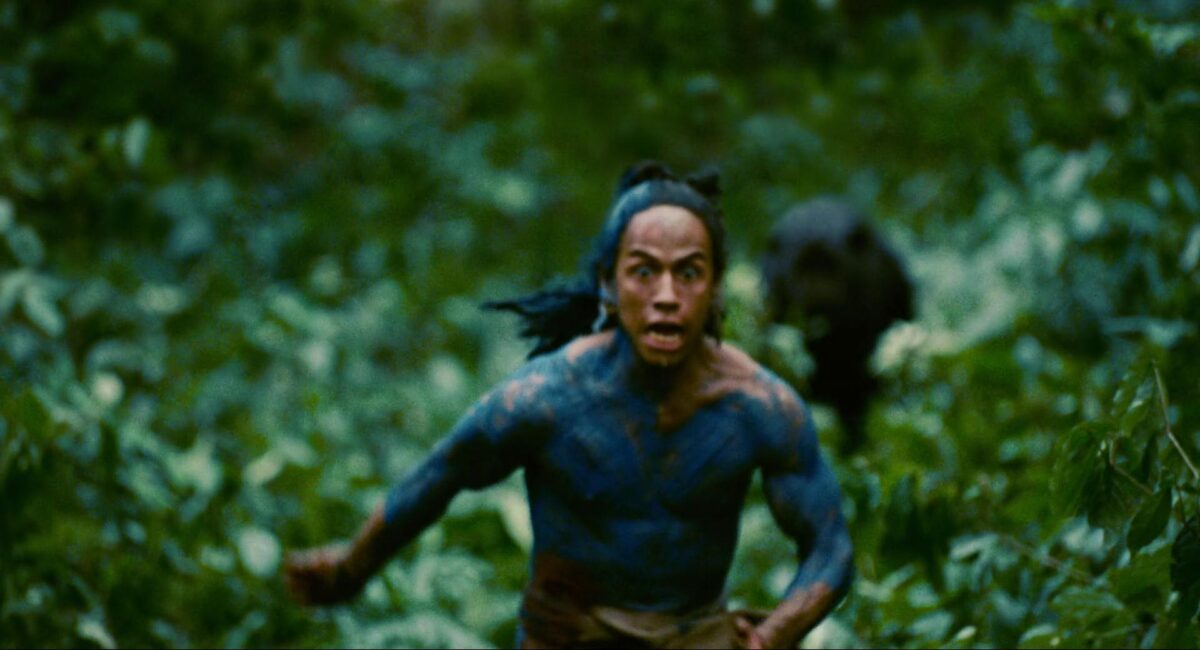
Hitting horrible writer’s block in the process of compiling this list gave me the chance to catch Mel Gibson defiantly espouse creationism on the nation’s most popular podcast while his Malibu home burned to a crisp. Whatever else one can say about Gibson, he’s certainly a man who stands vindicated by the American public, and it’s worth asking why. Apocalypto, his blood-gushing Mayan-language epic action thriller, might stand as the highest monument thus far to his brute-force vision as a pop artist; its power is irresistible. It’s true vintage pulp: thematically, in the sense of using colonial survivalist narratives as canvas to wax lyrical about Man and Civilization, and extreme vulgarity to bludgeon through audience defenses for an assault of irony-free grandiosity; formally, in its porny B-movie-ish handheld digicam photography and sun-bleached lighting creating a lump-in-the-throat rawness, its screenplay demonstrating an incredible storytelling economy through almost nonstop action. Not one labored breath is wasted; the film is a perfect machine. The alienness of the setting and language, along with Gibson’s total disregard for good taste and audience comfort zones, are exploited to the fullest: from the opening scenes of Mesoamerican hunters castrating a boar (and eating the testicles to imbibe its manhood), virtually every shot shows us something we’ve rarely seen before in a film, if at all, and every new sight propels the plot at the same time as it communicates crucial and generous information about the characters and their (sorry, but this is clearly the word Gibson is going for) savage world.
Ironically it’s a far more empathetic portrayal of indigenous peoples than Avatar: for all the regressive framing, Gibson and Iranian-American screenwriter Farhad Safinia imbue their quasi-historical Indigenous world with more extreme manifestations of the same virtues and vices they see in their fellow man at present, the same love, kinship and honor and the same fear, greed and arrogance unto ruin they see in their countrymen, rather than idealizing an unspoiled Indigenous subject. (Given the film’s alleged popularity in Mexico, it seems fair to say the appeal is not, uh, monochromatic.) They’re clearly fascinated by the push and pull of familiarity and foreignness to their twenty-first-century globalized audience, with universally recognizable family, community and gender dynamics and Campbellian narrative beats deployed amidst ways of life unrecognizable to the first world, informed by a pitiless natural environment. But the griminess of the visual register doesn’t allow any kind of New Worldish transcendence; even Mayan pyramids look more functional than mythical in Gibson’s high-speed ground-level survey of human predation and imperial rot. Only macho heroism and the actual hand of the divine––culminating in one of the most ideologically heinous and cinematically satisfying climaxes… maybe ever? – generate true awe. With the sheer control and mechanical perfection he exerts over his thundering symphonies of sadomasochism, I’m now ready to call Gibson one of the great living prophets of American reaction, and with the country shifting in his direction, it’s practically a necessity for any conscientious person to understand the power, the complexity––even the beauty––in his horrifying view of the world.
1. Battle Royale High School (Ichiro Itano, 1987)
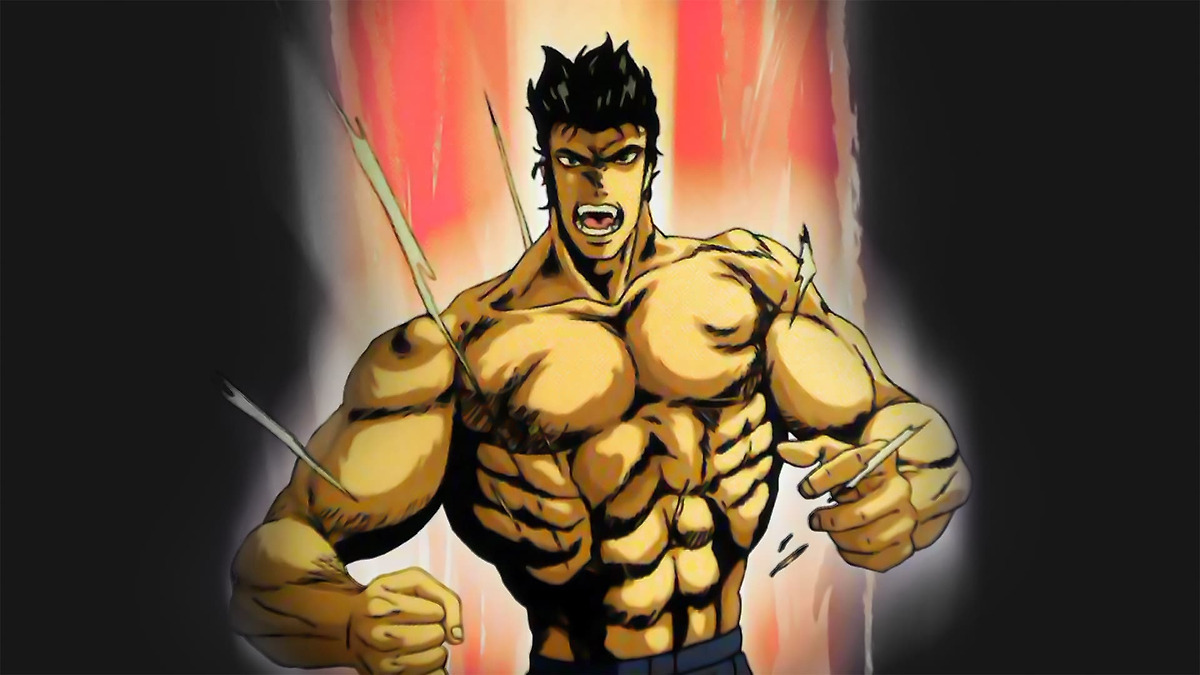
Words are elusive to describe a first-time viewing of Battle Royale High School, the hourlong exploitation opus from revered animator and 80s direct-to-video trashmaster Ichiro Itano. This is partly because it’s a highly compressed mashup of popular Japanese genres of the time stitched together so casually the whiplash crosses into psychedelia: high school martial arts romance (c.f. Ranma ½), tokusatsu sci-fi superheroes (c.f. Kamen Rider), urban fantasy demon-battler (YuYu Hakusho), a touch of space opera (Macross), and hardcore guro body horror (Tetsuo the Iron Man). The barely comprehensible and largely indescribable plot begins with a high school love triangle surrounding a bulked-out himbo karate club champ, and soon enough moves on to spectacles like a cyborg spaceman fighting a giant teddy bear and an androgynous urban samurai dueling a dark fairy queen from another dimension. The maximalist, incongruous collection of tropes deployed in burst-fire rhythm quickly boggle the mind, but when erotically charged demons begin to possess and transform young bodies (and inanimate objects) into fluid, visceral monstrosities straight out of the Cronenbergian id, it’s the psychosexual horror elements crammed into the already-baffling adolescent adventure romp that push this brief film over the edge from strange to psychotic (and thus unforgettable). Itano has a reputation for carnage and splatter (as in his cyberpunk thriller Angel Cop, which combines visual sadism with unabashed fascist messaging, or his postapocalyptic Violence Jack: Evil Town, which is actual gore porn), but this may be the most beautifully deranged squish he’s ever touched: only in cel animation’s world of unstable, fluid forms can one visualize mutation and gore this gnarly, this phantasmagorical. The Cronenberg clan themselves would be in awe of the fetishistically animated climax, wherein the hulking hero psychically reconstructs his virginal love interest’s nude body, sinew by sinew, from a splattered mass of flesh and entrails. As sexual coming-of-age metaphors go, this one––like the rest of the film’s baroque gore and sexual violence––seems to be ripped straight from the heart of an artistically visionary serial killer, or perhaps such a killer’s traumatized victims. Hard to say.
Was Battle Royale High School the best film I watched in 2024? That depends how you define “good.” But it is the only one that had me shouting disbelieving obscenities at my screen, alone in my apartment, at steady intervals for the full duration of its brisk runtime. So once again, my top pick has to be my top trash. In 2025, madness rules the day, reality is fluid, and American carnage is upon us. What better way to ring in the new year than by embracing, for just an hour or so, the blood-crazed animal within? Why not throw morals and rationality to the boiling seas, and enjoy what you (and your peers) really yearn to be, just one time? These violent delights will be nostalgia’s business soon enough.
See you in 2026.
The post Eli Friedberg’s Top 10 First-Viewings of 2024 first appeared on The Film Stage.


